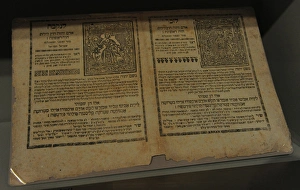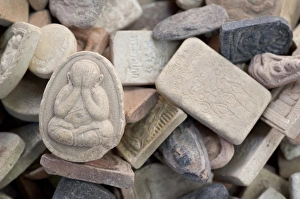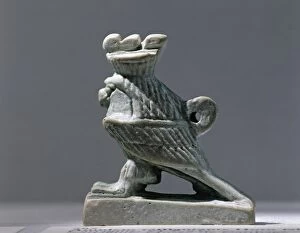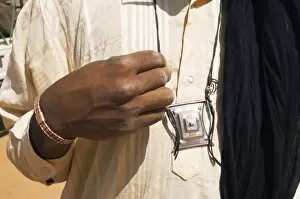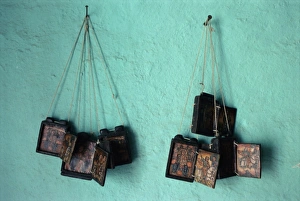Amulet Collection (page 9)
"Unveiling the Mystical Power: The Enigmatic World of Amulets" Step into the enchanting realm of amulets
All Professionally Made to Order for Quick Shipping
"Unveiling the Mystical Power: The Enigmatic World of Amulets" Step into the enchanting realm of amulets, where ancient cultures and religious beliefs converge to protect and empower. From the bustling streets of Cairo, a veiled Egyptian woman delicately adorns herself with an amulet, seeking divine guidance in her daily life. In Chatillon-sur-Chalaronne, Ain, France, Muslim symbols grace a car's interior as a testament to faith and safeguard against evil forces. Meanwhile, in Europe's Jewish Museum Berlin, intricate amulets serve as tangible expressions of divine protection within Judaism. Traveling further west to Paris, France, we encounter a Buddhist medal that embodies spiritual enlightenment and serves as a source of solace for its wearer. Similarly in France but from another perspective comes a symbol representing Muslim protection - an emblematic reminder of strength amidst adversity. Delving deeper into history reveals fragments from the Book of the Dead on papyrus originating from Egypt. These sacred texts were believed to guide souls through the afterlife while providing them with essential talismans for their journey. Ancient Egypt truly emerges as an epicenter for amulet craftsmanship; ceramic artifacts discovered in Budapest showcase their exquisite artistry. Amongst these treasures are Egyptian amulets meticulously crafted to harness supernatural powers and offer protection against malevolent spirits. Zooming closer into Luxor statue cache (stone), we witness two captivating details: Iwnit gracefully holds an ankh - symbolizing eternal life - while Hathor clutches this same emblem tightly. Both figures embody divinity and bestow blessings upon those who seek their favor. Amulets transcend time and geography; they bridge gaps between cultures by uniting humanity under shared desires for safety and prosperity. As we unravel their secrets one by one, these mystical charms continue to captivate our imagination – reminding us that even in our modern world filled with uncertainty, there is solace to be found in the ancient wisdom of amulets.

